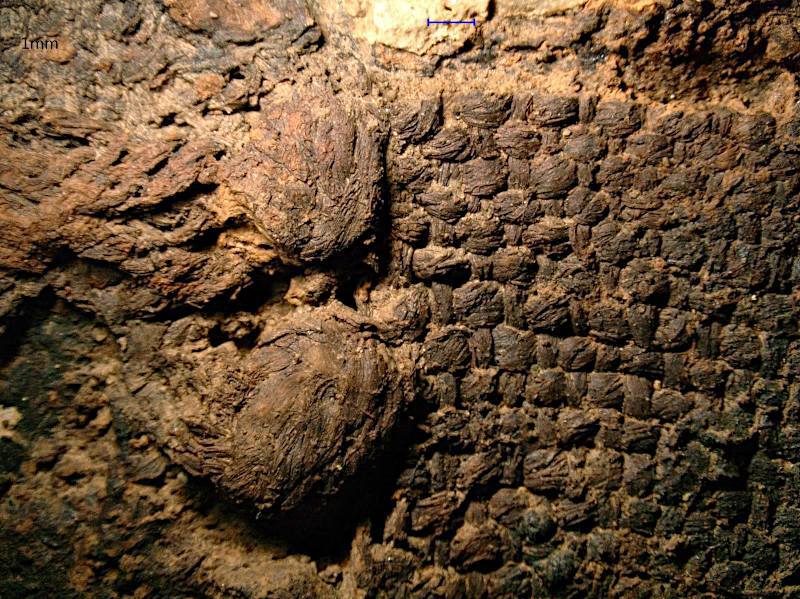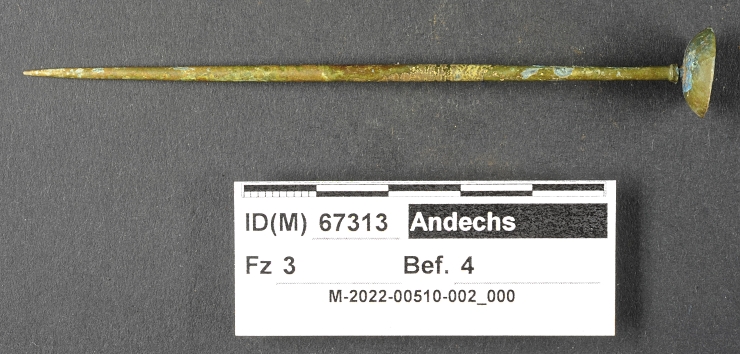Pěkný příspěvek, díky. Toto mi zahoukat pod cívkou, tak mě vezou 
Unique 2,800-year-old swords discovered in Germany prove the technological leap of the Hallstatt Age
Categories: Nálezy nejenom s detektorem v západní Evropě
In the Bavarian town of Andechs in the district of Starnberg, two extremely rare swords from the early Iron Age have been discovered. They date back to the 8th century BC and are an amazing testament to the development of weapons between the Bronze Age and the Iron Age. They are among the oldest iron swords ever discovered in southern Germany.
The weapons were discovered in March during the construction of a new firehouse. No sooner had the workers started excavating than they came across two swords and fragments of three ceramic vessels only about 40 cm below the surface. The objects were part of the grave goods. The swords were each in a separate grave with the cremated remains, which were originally placed in an organic bag or wooden container. A further six graves were found at the site with a wealth of equipment, including pins and bronze jewellery.
The swords are 76 cm and 66 cm long, both six centimetres wide. While the shorter one was probably used mainly as a stabbing weapon in man-to-man combat, the longer and heavierlonger was more suitable as a stabbing and slashing weapon, which could be wielded from above - for example, from horseback. They represent an important transitional period between Bronze Age and early Iron Age weapons.
Although both are made of iron, the older one was made in the shape and style of a typical bronze sword. The slightly younger sword has already been made in a design that takes advantage of the advantages of a stronger and more stable metal: "These two swords are evidence of a technological evolution. They tell us about the beginnings of ironworking and provide us with information about changes in weapons technology," explained the general curator, Prof. Mathias Pfeil, head of the Bavarian State Heritage Office.
A team of restorers at the Bavarian State Heritage Office in Munich cleaned the swords using micro-fine blasting technology and examined their structure in detail. The blades are heavily corroded in places and organic parts of the hilt are missing. However, the restorers were able to identify faint traces of horn on one of the hilts. Two of the four rivets that held the horn sheets to the handle remain.
Since no such remnants of attachment are visible on the other sword, restorers and archaeologists assume that the hilt was attached with resin glue. Furthermore, remnants of a multi-layered cloth weave were found on both blades, as well as remnants of the cord that wrapped the sword in several places. The weapons were probably wrapped in cloth and placed with the dead.
"There is no doubt that graves with swords distinguish the regional elite, whose status symbols included the most modern weapons of the time," said archaeologist Dr. Jochen Haberstroh of the Bavarian State Heritage Office, who supervised the excavation.
Roman Nemec
Sources: archaeologie-online.de

Sword from the early Iron Age

Remains of fabric on the sword blade with recognisable knots and fringes

Iron Age sword

Cup-shaped needle
The article is included in categories:




